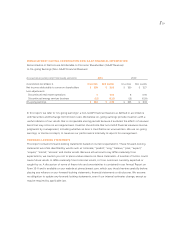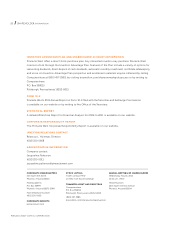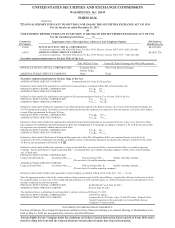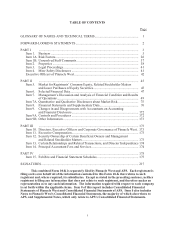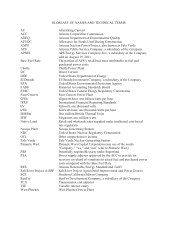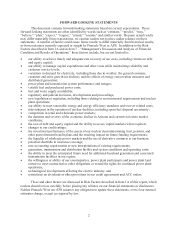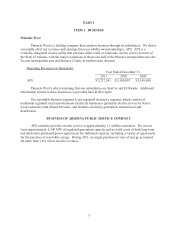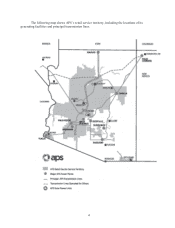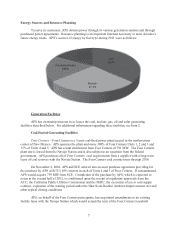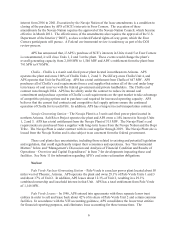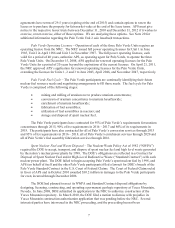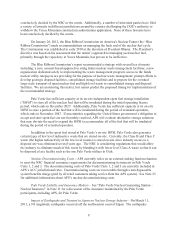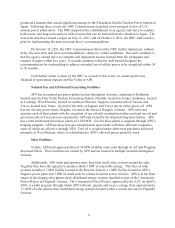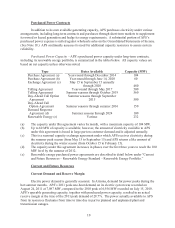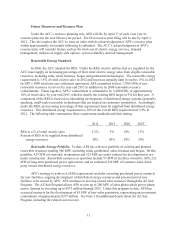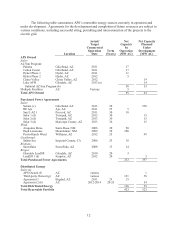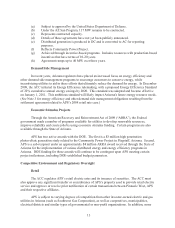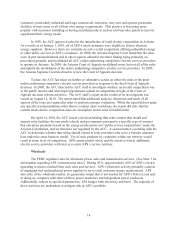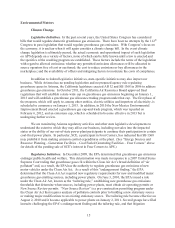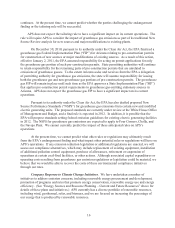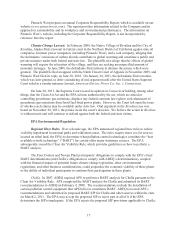APS 2011 Annual Report Download - page 31
Download and view the complete annual report
Please find page 31 of the 2011 APS annual report below. You can navigate through the pages in the report by either clicking on the pages listed below, or by using the keyword search tool below to find specific information within the annual report.7
agreements have terms of 29.5 years (expiring at the end of 2015) and contain options to renew the
leases or to purchase the property for fair market value at the end of the lease terms. APS must give
notice to the respective lessor trusts between December 31, 2010 and December 31, 2012 if it wishes to
exercise, or not exercise, either of these options. We are analyzing these options. See Note 20 for
additional information regarding the Palo Verde Unit 2 sale leaseback transactions.
Palo Verde Operating Licenses – Operation of each of the three Palo Verde Units requires an
operating license from the NRC. The NRC issued full power operating licenses for Unit 1 in June
1985, Unit 2 in April 1986 and Unit 3 in November 1987. The full power operating licenses, each
valid for a period of 40 years, authorize APS, as operating agent for Palo Verde, to operate the three
Palo Verde Units. On December 15, 2008, APS applied for renewed operating licenses for the Palo
Verde Units for a period of 20 years beyond the expirations of the current licenses. On April 21, 2011,
the NRC approved APS’s application for renewed operating licenses for the Palo Verde Units,
extending the licenses for Units 1, 2 and 3 to June 2045, April 2046, and November 2047, respectively.
Palo Verde Fuel Cycle – The Palo Verde participants are continually identifying their future
nuclear fuel resource needs and negotiating arrangements to fill those needs. The fuel cycle for Palo
Verde is comprised of the following stages:
mining and milling of uranium ore to produce uranium concentrates;
conversion of uranium concentrates to uranium hexafluoride;
enrichment of uranium hexafluoride;
fabrication of fuel assemblies;
utilization of fuel assemblies in reactors; and
storage and disposal of spent nuclear fuel.
The Palo Verde participants have contracted for 95% of Palo Verde’s requirements for uranium
concentrates through 2015, 90% of its requirements in 2016 – 2017 and 80% of its requirements in
2018. The participants have also contracted for all of Palo Verde’s conversion services through 2015
and 95% of its requirements in 2016 – 2018, all of Palo Verde’s enrichment services through 2020 and
all of Palo Verde’s fuel assembly fabrication services through 2016.
Spent Nuclear Fuel and Waste Disposal – The Nuclear Waste Policy Act of 1982 (“NWPA”)
required the DOE to accept, transport, and dispose of spent nuclear fuel and high level waste generated
by the nation’s nuclear power plants by 1998. The DOE’s obligations are reflected in a Contract for
Disposal of Spent Nuclear Fuel and/or High-Level Radioactive Waste (“Standard Contract”) with each
nuclear power plant. The DOE failed to begin accepting Palo Verde’s spent nuclear fuel by 1998, and
APS (on behalf of itself and the other Palo Verde participants) filed a lawsuit for DOE’s breach of the
Palo Verde Standard Contract in the U.S. Court of Federal Claims. The Court of Federal Claims ruled
in favor of APS and in October 2010 awarded $30.2 million in damages to the Palo Verde participants
for costs incurred through December 2006.
The DOE had planned to meet its NWPA and Standard Contract disposal obligations by
designing, licensing, constructing, and operating a permanent geologic repository at Yucca Mountain,
Nevada. In June 2008, DOE submitted its application to the NRC to authorize construction of the
Yucca Mountain repository. In March 2010, the DOE filed a motion to dismiss with prejudice its
Yucca Mountain construction authorization application that was pending before the NRC. Several
interested parties have intervened in the NRC proceeding, and the proceeding has not been


